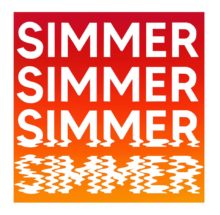Summer is a quiet time to be working in a chip shop. With family holidays, the promise of free time and seemingly endless barbecues, fewer people tend to rush in for a last-minute pie dinner after work. But I still have to look as if I’m hard at work to any passer-by who happens to glance through that expansive shopfront window. It is through this window, in one of many long summers, that I began to let my imagination drift – transforming the unassuming suburban landscape into a perilous mountain pass, or a deep rainforest, or an ancient civilisation. The window itself became somewhat of a portal that allowed me access into a detailed escapist fantasy that my subconscious mind was producing – but I soon realised that I didn’t need this barrier to investigate my tendency to get lost in imaginary worlds.
Since September of last year, I have become invested in the creation of flora and fauna to fill my own world – where my daydreams of adventures and impossible scenarios create a respite from the structure and pressure of the reality of my life. I view my sketches and notes of
invention as something of an explorer’s journal, as this alter-ego records and documents undiscovered creatures and locations during their travels. I frequently utilise the medium of digital drawing to neaten sketches and clarify details within my plans for new creations, with
basic features such as the layer function allowing me to refine and correct preliminary drawings in a way that proves more efficient than with pencil and paper. However, I also use the digital medium to create more detailed drawings and paintings that are representational of how constructed plants and animals may fit into a specific environment. Despite the majority of contextual information for my practise residing within my notes, sketches and concept drawings, I consider this to be just that – contextual. In order to bring my imagined world into reality, I have been working on sculptural interpretations of creatures from my own
alternate reality; using wire to construct a skeletal frame before layering other materials to eventually create a glitched, half formed representation of a living thing.
The belief that one has the power to create living things is one familiar to Theo Jansen, one of the artists whose work I find relevant to my practice. His kinetic, wind-powered ‘Strandbeest’ are subject to natural selection and survival of the fittest, as with any animal, through the durability of their design as they walk the beaches of the Netherlands until they’re too damaged to continue.
Detailed imaginary worlds have consistently influenced me throughout my entire childhood and adolescence. With a strong interest in the fantasy works of authors such as Tolkien and J.K. Rowling, I grew up constantly surrounded by entire worlds to lose myself in at any moment – undoubtedly influencing how I now go about creating my own fantasy world. I have frequently found myself more interested in the potential of such expanded universes than the story itself, therefore resulting in my goal to provide fragments of a world that prompt an audience to create their own narrative.
